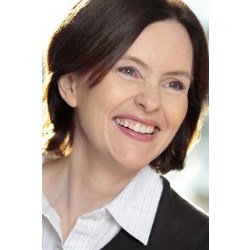If this is your company, CONTACT US to activate Packbase™ software to build your portal.
The concept of point-of-sale (POS) has been redefined dramatically in recent years. For consumers of the 2010s, the whole world is in a way one large shopping centre. Points of contact between commerce and consumers are present everywhere.
Consumers still visit brick-and-mortar stores in person, but they are also increasingly linked to various marketplaces via their smartphones, tablets, laptops or a virtual shelf, for example. The most important factor underlying the change is – surprise, surprise – the internet.
We consumers tend to simplify this as a rivalry between physical stores and online shops. However, the change is more complex than that.
Requirements for packaging are increasing
The internet has changed – and will continue to change – the marketing of products and services, the structures of commerce as well as consumer behaviour, irrespective of whether we are talking about brick-and-mortar stores or online shops.
At the same time, more and more is demanded from packaging and its materials and design. The product must be capable of attracting the consumer’s interest in various settings without losing its recognisable product identity.
Brand messenger – made of fresh forest fibre
Paperboard has proved to be unique in its ability to adjust and respond to changes in commerce. A high-quality paperboard package with stylish printing is attractive even in product photos in an online shop. Lightweight when transported yet durable, paperboard packaging protects its contents without damaging other products.
A smart paperboard packaging design provides consumers with a unique visual and tactile user experience, while also addressing the demands of everyday life. And when it is time to discard the packaging, paperboard is also perfectly suited for recycling.
Paperboard contributes to marketing success
Following the development of commerce, the role of packaging has become more important in terms of the purchasing decision. The packaging serves as a communication medium, promotes the product and strengthens the brand experience. It helps the product’s manufacturer and the store to increase their sales. At best, it also supports sustainable development.
I dare to say that of all packaging materials, high-quality paperboard is best equipped to address the broadening demands of commerce.
Consumers are increasingly aware of health issues in relation to both food consumption and its packaging. There is a desire for fresher and less processed food which is free from additives, whilst also being convenient and safe. High quality packaging helps supply both the convenience and the protection.
Attention has most recently turned to fluorinated compounds (PFCs). Fluorinated substances repel water and oil, and are therefore used in non-stick cookware, for instance. Likewise, some producers also add them to paper or paperboard packaging for foods. This, however, can be perceived as potentially detrimental to health, as some fluorocarbons are now recognised as potential carcinogens.
Moving away from fluorinated chemicals
In 2015, Denmark introduced voluntary guidelines to limit the use of fluorinated substances in paper packaging and food wrapping materials, and there are calls for these guidelines to receive further EU-wide legislation.
In a more recent development, the US Food & Drug Administration has now banned PFCs from food packaging, which will affect imported goods from 1 February, 2016.
Fresh forest fibre boards are clean and safe
At Metsä Board, we do not add any PFCs or their derivatives to our pulp or paperboard during the entire production process. Boards made from fresh forest fibres are naturally clean and safe, and all of the raw materials are traceable too. Boards with barrier properties produced by extrusion coating provide protection from moisture and grease, and are fully approved for direct food contact.
Packaging and food safety
Packaging is an ever more critical component in the overall food safety process. It is important then, that the barriers in use now, or those developed in the future, do not contain fluorinated chemicals and that procedures remain in place to identify other potentially harmful substances that may enter the supply chain.
In addition, as consumers’ awareness of food safety is increasing, finding the optimal solutions for safe food packaging is an essential prerequisite for responding to the latest demanding consumer food trends.










